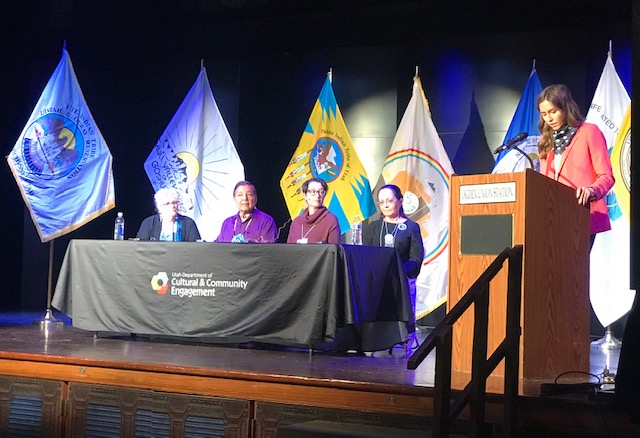Miacel Spotted Elk, High Country News, who reports on the Indigenous Affairs for the Intermountain West, describes the complex yet essential work the “Railroads in Native America” (RNA) Steering Committee sought to accomplish, in this Utah Division of Indian Affairs directed conference, held last May 19-21, 2022. The aritcle includes noteworthy photographs of professional Utah photographer Eugene Tapahe (Diné).
Two years in the making, this all inclusive gathering of over hundred and fifty Native American and non-Native American scholars, elders, college students and interested people–many of whom traveled from across the United States and Canada–gathered to show how Native voices can be better and more authentically included in the story of America.
Here is the last two paragraphs from Spotted Elk’s article:
“In this way, the three-day symposium was a kind of laboratory. We collectively interrogated the railroad and reflected on the flow of violence, information and religious piety that was born out of its introduction. We didn’t unanimously agree or accept every word of every presentation, and we didn’t need to. What mattered, ultimately, was that we spent our time collectively trying to understand the many ways that America’s past informs Indian Country’s present — including how we teach and digest that relationship.
History is an emotional and a necessarily complicated, even contradictory, process. But in an age of withering institutions, the very act of convening in Ogden to share our histories added to my own sense of determination: I want to assist in the broader task of re-establishing tribal nations as the textured, sovereign communities we have been since time immemorial.”
James Toledo (Diné) Program Manager at the Utah Division of Indian Affairs, who co-chaired the RNA Steering Committee, was also quoted in this article.
“I remember as a kid kind of asking questions to my parents, ‘Why are things set up this way? Why is this part considered Indian land and this part is not Indian land?’” he said. The symposium, in his eyes, offered a way for the state of Utah to say clearly, “These are the outcomes of (U.S.) policies and how they have affected tribal communities all over the country.”
Here is Spotted Elk’s complete article: “The complexities of teaching Indigenous history In Ogden, Utah,” familiar questions of shared responsibility and shared histories surfaced —all at a three-day symposium on the railroad and Indian Country.” Sept. 2, 2022.

